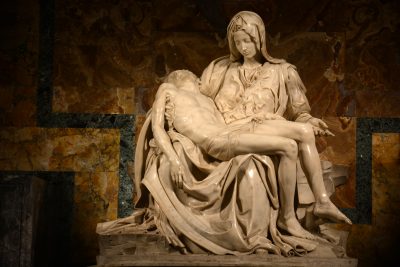 Teresa of Avila was a Spanish Carmelite nun and a brilliant spiritual director, writer and reformer. She and St. John of the Cross co-founded the Discalced Carmelites, an order that sought to reform the Carmelites by deepening their contemplative practices. Her autobiography and her book, Interior Castle, have become classic texts for Christian contemplatives.
Teresa of Avila was a Spanish Carmelite nun and a brilliant spiritual director, writer and reformer. She and St. John of the Cross co-founded the Discalced Carmelites, an order that sought to reform the Carmelites by deepening their contemplative practices. Her autobiography and her book, Interior Castle, have become classic texts for Christian contemplatives.
Like many early mystics, Teresa followed the lead of the Song of Songs and sought to realize the spiritual “marriage” between her soul and Christ. She advocated a spiritual practice of detachment wherein one lets God be the Mystery who transcends all that one can see or say about God. In this emphasis, Teresa could be classified as an apophatic mystic of detachment, a contemplative of the First Person path, the path of Unknowing.
Yet although Teresa’s reflections draw from First Person consciousness and resonate with the teachings of Pseudo-Dionysius, Marguerite Porete, Meister Eckhart, or even a Theravadan Buddhist, she was firmly rooted in the Second Person. Many of her confessor priests and many of the spiritual books she was reading advised prayerful people to put aside all thought and all methods of prayer that use the imagination, but she was not interested in walking forward into a vast cloud of unknowing. Instead, she was resolutely committed to what she called Christ’s “most sacred Humanity”:
For they say that anything else, even Christ’s Humanity, will hinder or impede those who have arrived so far from attaining to the most perfect contemplation… but I cannot bear the idea that we must withdraw our selves entirely from Christ and treat that Divine Body of His as though it were on a level with our miseries and with all created things… I used to read these books… I tried to put aside everything corporeal [activities including thinking, reflecting and imagining]… I believe I was committing an act of high treason…
All my life I had been greatly devoted to Christ… then returned to my habit of continually rejoicing in the Lord. Especially when communicating [participating in Holy Communion], I would wish I had His portrait and image always before my eyes…. Is it possible, my Lord, that for so much as an hour I could have entertained the thought that Thou couldst hinder my greatest good?1
 Teresa never abandoned her most holy Friend, Jesus. Teresa’s contemplative and prayer experiences always circulated around her I-Thou relationship with him, and it is easy to imagine that her consciousness became transfigured in this relationship. She prayed,
Teresa never abandoned her most holy Friend, Jesus. Teresa’s contemplative and prayer experiences always circulated around her I-Thou relationship with him, and it is easy to imagine that her consciousness became transfigured in this relationship. She prayed,
For when I see Thee near me I have seen all blessings. No trial has come to me that I cannot gladly bear when I look at Thee as Thou stoodest before Thy judges. With so good a Friend, so good a Captain at our side, Who came forward first of all to suffer, one can bear everything. He helps us; He gives us strength; He never fails; He is a true Friend… What more do we need than to have at our side so good a Friend, Who will not leave us in trials and tribulations, as earthly friends do?2
Teresa was clearly a lover of Christ who danced across the invisible boundary between the First and Second Persons of the Trinity, between Creator and Jesus.
1 Teresa of Avila, The Life of Teresa of Jesus: The Autobiography of St. Teresa of Avila, trans. & ed. E. Allison Peers (Garden City, N.Y.: Image Books, 1961), 209-211.
2 The Life of Teresa of Jesus, 212-213.